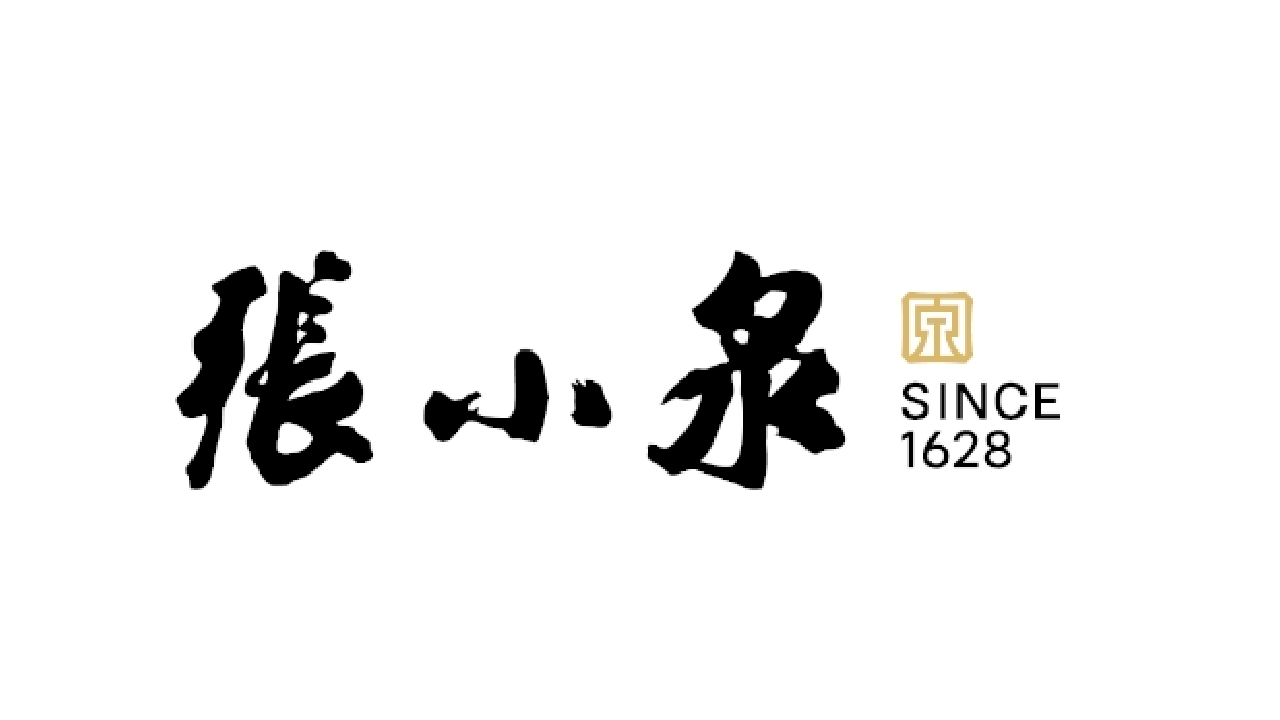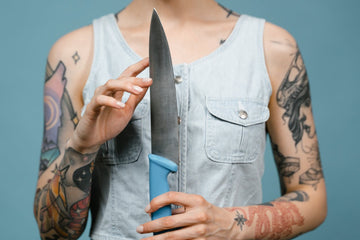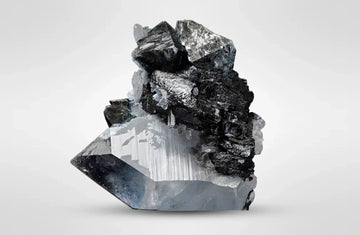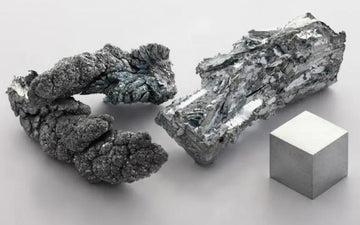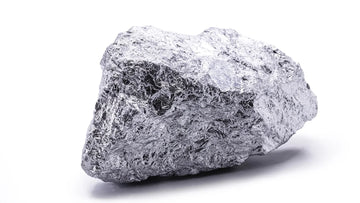In every kitchen knife lives a constant tug-of-war. Like a seesaw that can never find perfect balance, when one quality rises, another must fall. This struggle between hardness, toughness, and rust resistance determines whether your knife becomes a trusted companion or a frustrating disappointment.
Hardness: The Memory of Sharpness
Hardness is like determination—it's what allows a knife to keep its promise of sharpness through countless vegetables, meats, and meals. We measure this determination using something called the Rockwell Hardness Scale (HRC). The higher the number, the harder the steel.

Japanese knives, with HRC values above 60, are like people with extraordinary memory. They remember their sharpness through hundreds of tomatoes, onions, and carrots. They hold their edge with remarkable persistence, creating clean cuts long after other knives have dulled.
But this determination comes at a price. When steel becomes too hard (around HRC 58-60), it can become brittle like a dry autumn leaf. Scientists once studied knives that were too hard and found something surprising—they sometimes cracked while cutting ordinary vegetables. Imagine a knife that breaks while slicing a carrot! This happens because extremely hard steel can't absorb unexpected forces; it can only resist or break.

German knives take a more moderate path. With hardness between HRC 55-58, they need sharpening more often but won't snap when they hit an unexpected chicken bone or frozen chunk of food. They bend slightly instead of breaking, like a reed that bends in the wind rather than snapping in a storm.
Toughness: The Art of Bending Without Breaking
Toughness is like resilience—the ability to face unexpected challenges without falling apart. It's what allows a knife to withstand the sideways pressure of chopping, the torque of prying (though you should never use your knife as a pry bar), and the impact of hitting a hard cutting board.

Western-style knives from makers like Wüsthof embrace this quality. Their moderate carbon content (around 0.5%) and additions of molybdenum (about 0.8%) create a structure that absorbs impact rather than cracking. It's like building a bridge that can sway slightly in strong winds instead of remaining rigid and risking collapse.
The shape of a knife also affects its toughness. Thin Japanese blades are like delicate porcelain—beautiful and precise but easily chipped. German knives with their thicker spines and less dramatic tapering are more like earthenware—not as refined but much more forgiving of rough handling.
In those knives that failed during vegetable cutting, researchers found that the hard particles inside the steel had clustered together instead of spreading evenly. This created weak paths where cracks could easily travel, like rivers finding the path of least resistance through soil.

Rust Resistance: The Shield Against Time

Rust resistance is like immunity—it protects the knife from water, air, and the passage of time. This protection comes primarily from chromium, which forms an incredibly thin but effective barrier on the steel's surface.
For a knife to resist rust effectively, it needs at least 13% chromium. Most kitchen knives contain about 15%. This invisible shield is astonishingly thin—about five nanometers, or 1/20,000th the width of a human hair—but it prevents oxygen and water from reaching the vulnerable iron beneath.
Yet this protection isn't absolute. When scratched or exposed to acidic foods or salt for too long, small holes can form in the barrier. This is why even "stainless" steel can sometimes develop rust spots, especially in high-carbon Japanese knives. The carbon in these knives tends to grab some of the chromium to form hard particles, leaving less available to create the protective layer.

Molybdenum helps strengthen this protection, especially against salt and dishwasher chemicals. Those failed knives contained less molybdenum than they should have (0.3% instead of 0.5%), making them more vulnerable to spotting and staining.
Even with strong rust resistance, all knives need basic care. Drying your knife after washing is like putting on a raincoat before stepping into the rain—it helps prevent moisture from testing the limits of the protective barrier.

When the Balance Fails: A Lesson in Knife Making

The story of those failed kitchen knives teaches us what happens when these three qualities fall out of balance:
- The knives were too hard (HRC 58-60), making them brittle under stress.
- Their internal structure contained clusters of hard particles that created highways for cracks to travel.
- They had less molybdenum than needed, weakening their resistance to corrosion.
It's like a stool with three uneven legs—the entire structure becomes unstable. One weakness might have been manageable, but the combination proved catastrophic.
Finding Harmony in Steel
The best kitchen knives find a thoughtful compromise among these competing qualities:
-
They contain the right mixture of elements: sufficient chromium (at least 13%) for rust resistance, appropriate carbon (0.5-1.0%) for hardness, and some molybdenum and vanadium (around 1% or less) to enhance toughness and wear resistance.
-
They undergo careful manufacturing: properly heating and cooling the steel so the internal structure becomes uniform rather than clustered, like ensuring that bricks in a wall are evenly placed rather than haphazardly stacked.
-
Their shape balances cutting ability with structural integrity: thinner for precision cutting or thicker for durability, depending on intended use.
Most home cooks find that knives made from X50CrMoV15 , 50Cr15MoV steel (hardness 55-58 HRC) offer a sensible compromise. These knives stay reasonably sharp, won't break under normal use, and resist rust well enough for everyday kitchen conditions.
Knife enthusiasts might prefer premium options like SPG2, and VG-10 (60-64 HRC) that achieve higher hardness while maintaining respectable toughness through advanced manufacturing techniques. These knives cost more and need more attention, like thoroughbred horses compared to dependable farm horses.

In the end, there is no "perfect" kitchen knife, just as there is no perfect tool for every job. The right knife depends on what kind of cooking you do, how much maintenance you're willing to provide, and which qualities matter most to you. Understanding this perpetual balancing act helps you choose a knife that will serve you faithfully for years to come.
FAQs
Why do kitchen knives rust even when they're stainless steel?
Even stainless steel knives can rust because "stainless" doesn't mean "rustproof." When exposed to salt, acids (like citrus or tomatoes), or left wet for extended periods, the protective chromium oxide layer can break down. Hand wash your knives, dry them immediately, and avoid soaking them to prevent rust.
What is the best steel type for everyday kitchen knives?
For most home cooks, X50CrMoV15 (found in brands like Wüsthof and Henckels) offers the best balance of edge retention, ease of sharpening, and rust resistance. Japanese VG-10 or AUS-10 are excellent alternatives if you prefer sharper edges and don't mind more maintenance.
How often should I sharpen my kitchen knives?
Most home cooks should hone their knives with a steel rod every 2-3 uses and properly sharpen them every 3-6 months. Professional cooks may need to sharpen monthly. If your knife struggles to slice a tomato cleanly, it's time to sharpen.
Can I put my kitchen knives in the dishwasher?
No. Dishwashers damage knives in multiple ways: detergents are abrasive to the blade, heat can affect the handle, knives can bang against other items dulling the edge, and prolonged moisture promotes rust. Always hand wash and immediately dry your knives.
How do I remove rust spots from my kitchen knife?
Make a paste with baking soda and water, apply it to the rusted areas, and gently scrub with a non-metallic pad. For stubborn spots, soak briefly in white vinegar before scrubbing. Rinse thoroughly, dry completely, and apply a thin layer of food-grade mineral oil to prevent future rust.
Are expensive kitchen knives really worth the money?
Quality knives are worth investing in because they offer better edge retention, more comfortable handling, and longer lifespans. However, there's a point of diminishing returns around $150-200 for most home cooks. Professional-grade knives above this price point offer refinements that casual cooks may not notice.
Why do Japanese kitchen knives chip more easily?
Japanese knives are typically harder (60-66 HRC) to maintain sharper edges longer, but this hardness makes them more brittle. They chip more easily when used incorrectly—like cutting frozen foods, bones, or twisting the blade. Use Japanese knives for precision cutting of softer ingredients and choose German knives for tougher tasks.
What's the difference between German and Japanese kitchen knives?
German knives are typically thicker, heavier, and softer (56-58 HRC). They're more durable, resistant to chipping, and versatile for tough tasks. Japanese knives are thinner, lighter, and harder (60-66 HRC). They maintain sharper edges longer but require more careful use and maintenance.
How do I properly store my kitchen knives?
The best storage options are magnetic strips (ensuring the blade makes contact, not the edge), knife blocks with horizontal slots, or blade guards for drawer storage. Avoid tossing unprotected knives in drawers where they can bang against other utensils, dulling the edge and potentially causing injury.
How long should a good kitchen knife last?
A quality kitchen knife can last decades or even a lifetime with proper care. The blade should last 5-10 years of regular use before potentially needing professional thinning (not just sharpening). Many professional chefs use the same primary knives for 20+ years through proper maintenance and occasional professional servicing.
